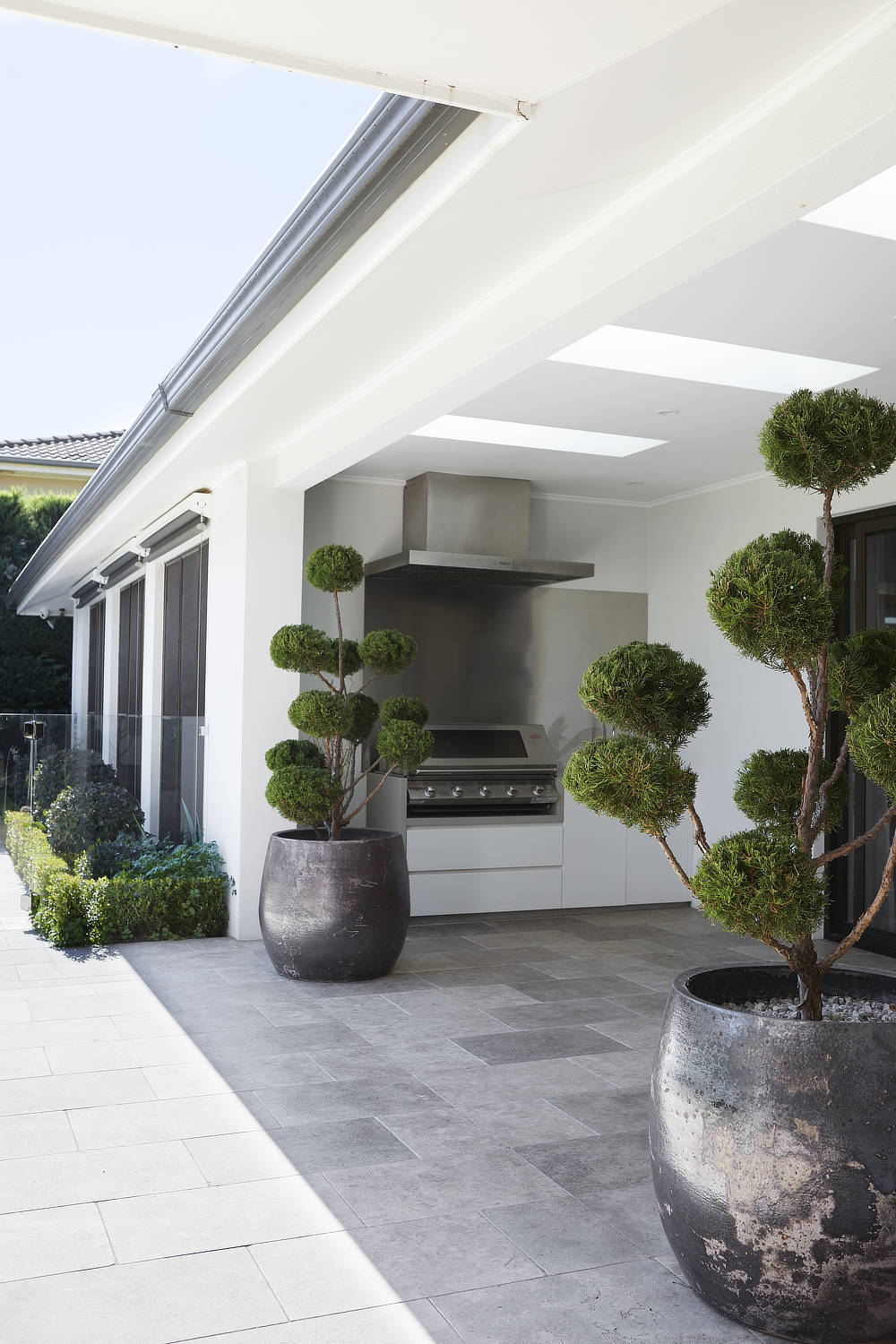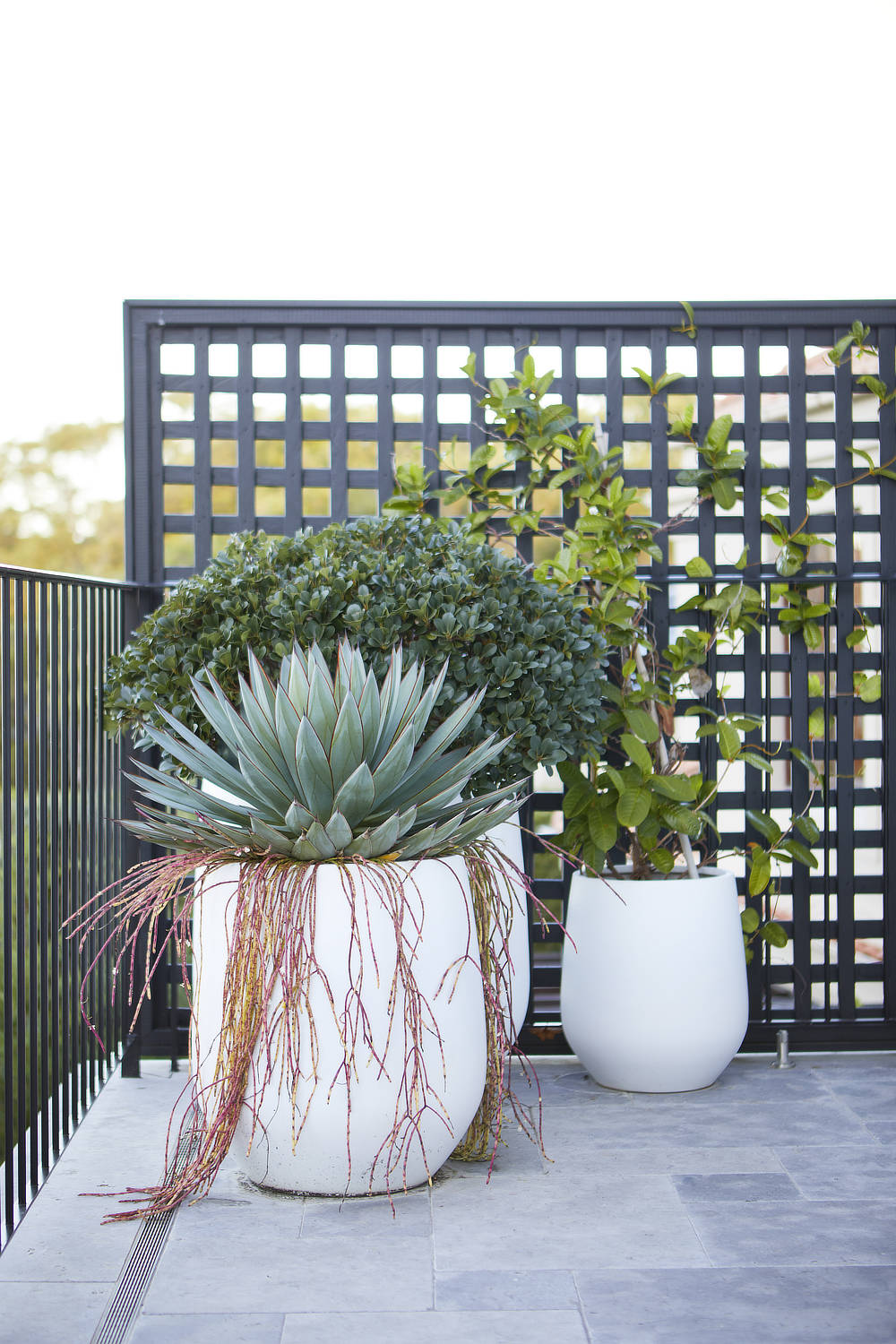No matter the size of your garden, be it a sprawling estate or a tiny inner-city courtyard you are bound to have a few potted plants. Keeping plants in decorative pots dates back as far as Ancient Egypt so you would think as a race we would have perfected the art of keeping them….. well if you don’t seem to be able to get anything in a pot to thrive here a few of my tips.
First you need to select the right pot.
This depends on a huge array of factors such as the size of the space you are trying to fill, the impact you are trying to achieve and the types of plants you want to grow. If you are after some screening, you may want some longer trough pots to grow some hedging plants. If you want a single feature plant, such as a dragon tree or a Cycad, you may need to look at a singular large statement piece or you may want a collection of smaller pots in a cottage garden style to give you interest in the different individual plants.
When selecting your pots try to get the style of the pot to match the style of your garden as this will set the tone of it and don’t be afraid to invest well in these vessels. Cheap pots deteriorate quickly in our harsh climate, especially as they get wet and dry out as we water them so you need invest in something that will last. You don’t need to get the most expensive out there but beware cheap pots can be a false economy.
Most plant deaths in pots is due to not enough or too much water. To ensure you don’t drown your plants you need to get the drainage right. Although modern potting mixes are great for drainage the small holes in the bottom of pots can easily clog and waterlog the root zone. I like to put a layer of gravel in the bottom of my pots covered in geotextile fabric before putting the potting mix on top as this makes sure the holes stay clear and drain well.
Buy the best potting mix you can afford as the higher the price the better the quality ingredients and I only ever use a red tick potting mix as this shows it is a premium mix that meets Australian standards. Every potting mix is made of organic ingredients so over time it will drop in the pot however try not to over compact potting mix down as this is just like planting into compacted soils and your plants will suffer. It’s much easier to top up potting mix than it is to replace a poorly performing plant.
With the right pot and good quality mix you then need to pick the right plants at the right size. The same rules apply to picking plants for sun and shade but beware that potted plants dry out quickly so you need to be able to give your delicate plants a little more shelter and for hot spots select drought tolerant natives or succulents. When picking plants for pots try not to use small plants in big pots in an attempt to save money thinking that the plant will grow to fit the size of the pot. You will find the water you give the plant will travel over the root ball and down the sides much quicker than it will absorb into the root ball and you will be fighting a plant that is screaming out for more water.
Once you have your plants potted up you need to care for them correctly. This means keeping the water up to them, mulching them well and applying soil wetter every season to ensure they get the water they need. Check the hole at the bottom drains properly on a regular basis and feed you plants with a slow release and a liquid fertiliser during the growing season to make sure they have all the nutrients they need. Keeping your plants well-watered and fed means they are less susceptible to being attacked by pests and disease but keep an eye out for these, especially on the underside of your plants.


